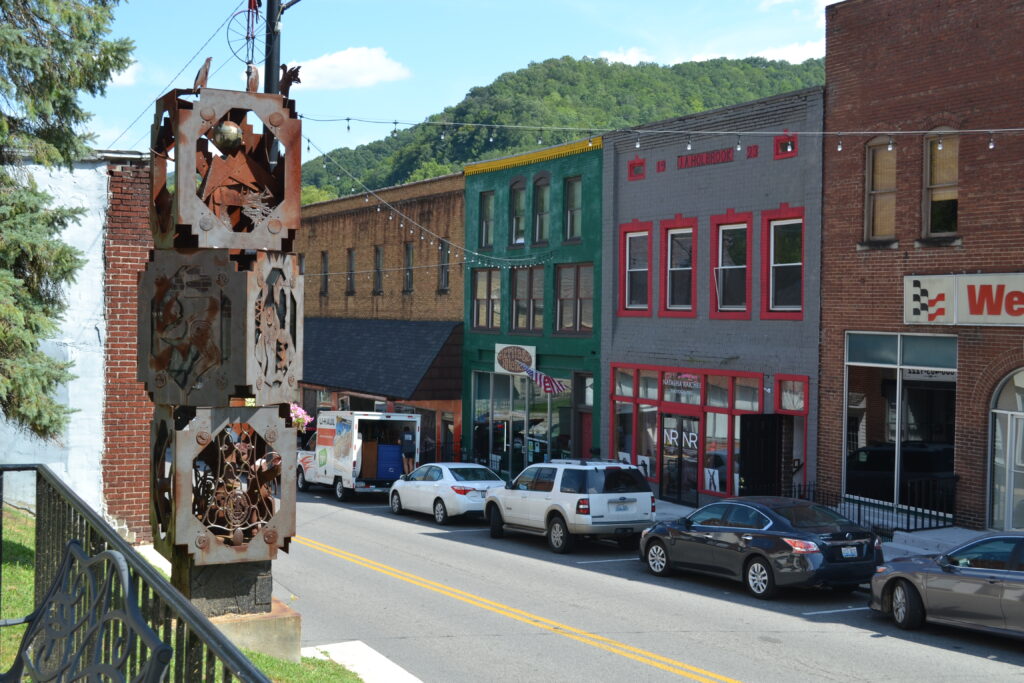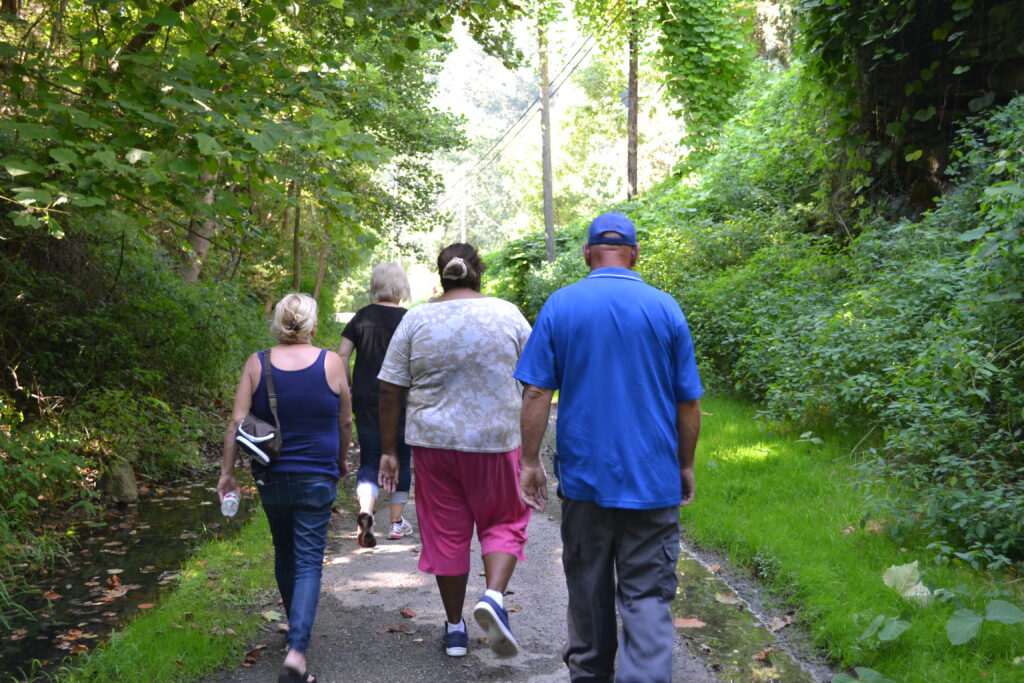
A few years ago I spent some time in Whitesburg, Kentucky, which is currently in the news because it flooded, horribly. I was there poking around a story that never materialized, but I met some good people and wrote a couple of possible ledes — which is what one does when one has rich material and no idea how to make it into something. It never turned into an article, but here’s something I think is relevant, given the flooding.
On a hot day in the mountains of eastern Kentucky, I’m walking briskly along a converted rail trail with a small group of people who – truth be told – don’t look like they regularly walk much farther than the refrigerator. I’m talking with Royce, a wiry, retired coal mine mechanic with awesome steel-gray hair, a deeply crevassed face, and the rock-solid jaw-line of a Civil War statue. He’s telling me how he cut his truck in half.
Royce is, by most people’s standards, poor, but he doesn’t dwell on it. It is simply his situation, and he stoically uses ingenuity and hard work to make-do. His vehicle is a 1988 GMC one-ton crew cab pick-up that he keeps running just fine. When presented with the opportunity to buy a second, similar model for the price of a nice dinner for two, he couldn’t pass it up.
“I thought I’d buy it for parts,” he says, “but then I thought maybe I’d fix it up for my wife.”
His wife, Anita, is walking about 10 yards ahead of us, carrying on an animated conversation with a couple of other women. Anita is a stout and determined African-American in pink pedal-pushers and blue, store-brand sneakers. She plows through the 90-degree heat like a champion, and anyone who presumes racism is universal in this part of the country should see how naturally Anita fits in with her easily stereotyped white, rural, non-college-educated, working class friends and neighbors.
We are in Whitesburg, Kentucky, walking on the old L&N Railroad line built for hauling coal. The mines closed back in 1980s, the railroad recycled the track to use elsewhere, and most of the town’s population lost its jobs. The abandoned right-of-way has been converted into a recreation trail. It is beautiful and tranquil – a three-mile long, tree-shaded glen with the North Fork of the Kentucky River on one side and rock cuts on the other.
Royce and Anita are part of a group that walks every Thursday and Saturday as part of an experiment to see if sedentary people can by lured from their couches. They are baited with $10 vouchers good for fresh produce at the local farmer’s market. Participants show-up at the market, sign in, then walk three-quarters of a mile out to a public swimming pool and three-quarters of a mile back. When they’re done, they are given wooden tokens that are as good as cash at the farmers market, which this time of year is heavy with opulently juicy peaches, the first green apples of the coming autumn, a wide variety of beans and tomatoes, root vegetables with soil still on them, and honey from bees working the wildflowers that bloom so promiscuously in these hills.
The walking program is small but shows promise. Budgeted for 60 participants, with some creative money management it underwrites 64. It is run by Appalachian Groundswell, a do-gooder organization that has its hands in a dozen projects designed to uplift this corner of America’s poorest region. The study itself is a project of the University of Kentucky, a hundred miles away in Lexington. Every week, previously sedentary participants arrive on time, walk along the river, and take home fresh produce. They fill out questionnaires about their diets and how much exercise they get, and periodically a research assistant comes from the university to weigh them and draw their blood.
“It does three things,” says Valerie Horn, the retired schoolteacher who runs the program. “It gets them exercising, it gets them eating better, and it supports our local farmers.”
Walking along, it’s clear Royce and his co-walkers couldn’t care less about that. They’re just walking and talking. He explains how he blew out a knee popping the clutch in his first 1988 pick-up, which has a manual transmission. That doubled his resolve to get his “new” 1988 truck – which has an automatic transmission – up and running. Being a mechanic, that wasn’t much of a problem, but he is solicitous of his wife and worried that it was too big for her to drive.
“It was too much for her to handle,” he says. “She don’t need a truck that big.”
In what has to be one of the sweetest examples of mission creep ever, Royce’s idea grew from simply getting the truck running to converting it from a one-ton to a half-ton truck so Anita could maneuver it more comfortably.
He used a torch to cut the truck in half, right behind the cab. Then he removed thirteen-and-a-half inches from its center section before welding it back together. He makes it sound simple, but when I asked a mechanically competent friend how hard it would be for an individual without a hydraulic lift-equipped garage and several helpers to remove thirteen-and-a-half inches from a 31-year old pick-up and end up with a reliably running truck, his described it as “damned near impossible”.
Royce got it done, though, and now he and Anita are a two-truck family. His knee is doing better, too, in part because he does this walking thing twice week, rain or shine. He’s never exercised before, never had to. All those years as a coal mine mechanic, man-handling huge truck tires, pulling steel cable across fields and down tunnels, constantly lifting and bending and struggling with big, heavy things: folks in the city call that cross-fit, and they pay hundreds of dollars a month to do it. For Royce, it was how he fed his family. And now he walks.

